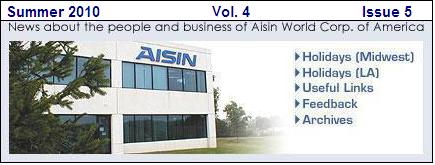 |
 |
|||||||||||||||||||||
|
||||||||||||||||||||||
 |
|||||
GOING GREEN: How to Be Green at Home & Work Everywhere you turn, you hear people say “Go Green!”, and things like, “The future is green!” These days you probably feel flooded by dire-sounding environmental news ("the Earth is set to deflate by 2050") and endless suggestions for greener living ("algae cold-fusion reactors for your shoes"). I’m not sure about you, but when I hear things like that I get a bit frightened. Fret not, friends, we’re here to break it down into bite sized chunks of simple, everyday ways to live a greener, healthier, more ethical (and ultimately more fun) life. Going Green at Home: It doesn’t take a lot of effort to start “Going Green” at home. You don’t have to deprive yourself and you can even save money as you’re saving the environment around you. For instance, taking only a ten minute shower with a low flow shower head saves you 10 gallons of water, plus the energy you save from not heating the extra water. Turning off the water as you brush your teeth and shave will save 3-5 gallons of water every three minutes. A great step for all of us to take this summer is to make sure we have faucets with aerators (wire mesh attachments). They are easy to install and can reduce your water flow by half without reducing the water pressure. There are many small things we can do to get started that won’t change our lifestyles too drastically. Energy-saving lightbulbs use about one-quarter the energy of standard light bulbs and can last up to ten times longer. Buying an $8 water filter in a pitcher can replace as many as 300 water bottles. We can also use matches instead of lighters. Each year about 1.5 billion disposable lighters end up in landfills and incinerators. If you must use a lighter, invest in one that can be refilled. Another great way to go green around your home is to purchase a clothes dryer with a moisture sensor. Dryers are one of the most energy-intensive appliances. A moisture sensor is s device that allows your dryer to automatically shut itself off once the clothes reach a specified level of dryness. If you’re not in the market for a new dryer, just make sure to always run full loads and keep the lint filter clean. You can also switch the dryer off when the load is finished, since most dryers still use power while on standby. By washing your clothes in the cold/cold cycle, you are using less energy than with the warm or hot cycles because the motor inside the washing machine isn’t running to heat up the water. Also, when using cold water during the wash cycle, you are helping to prevent colors from bleeding through your most important garments. If you’re at the store, and the clerk asks you if you would prefer paper bags or plastic, which would you choose? Normally one would associate those reusable, easily recyclable paper bags with the Going Green front; however, this subject can be very misleading. Insight into the implications of using and recycling each kind of bag can be gained from looking at overall energy, emissions, and other life cycle-related costs of production and recycling. But what does that mean to me and you? Both paper and plastic bags require lots and lots of resources and energy. Proper recycling requires due diligence from both the consumer and the municipal waste collector or private recycling company, so there are a lot of variables that can lead to low recycling rates. Ultimately, neither paper nor plastic bags are the best choice. I recommend choosing a reusable canvas bag that you can purchase at your local market.
Going Green has been an important step at Aisin. We have incorporated many energy efficient and environmentally thinking procedures, such as our Battery Recycling program. Over three billion dry cell batteries are sold each year in the U.S. and batteries that are disposed of in municipal landfills and trash incinerators disperse significant amounts of heavy metals and other toxic substances into the air and water. Aisin knows the importance of battery waste prevention and that recycling strategies are essential. You can find a Battery Recycling bucket in the first and second floor printer alcoves and also in the Mezzanine area. Aisin also purchases janitorial paper and kitchen supplies with at least 40% Post-Consumer Waste. Recycled paper uses much less water and energy to make than making new paper. In two of the restrooms near the front lobby, we are testing out two Dyson Airblade hand dryers. Studies have shown that based on 200 dries daily for 300 days, the Dyson Airblade costs approximately $26.03 versus an average of $1200 for paper towel use. This helps the environment by not using paper hand towels and it’s said that this dryer uses 80% less energy than most other hand dryers. This summer, please take a look around to see what change you could make to start Going Green. Even a small change will make a big difference.
|





